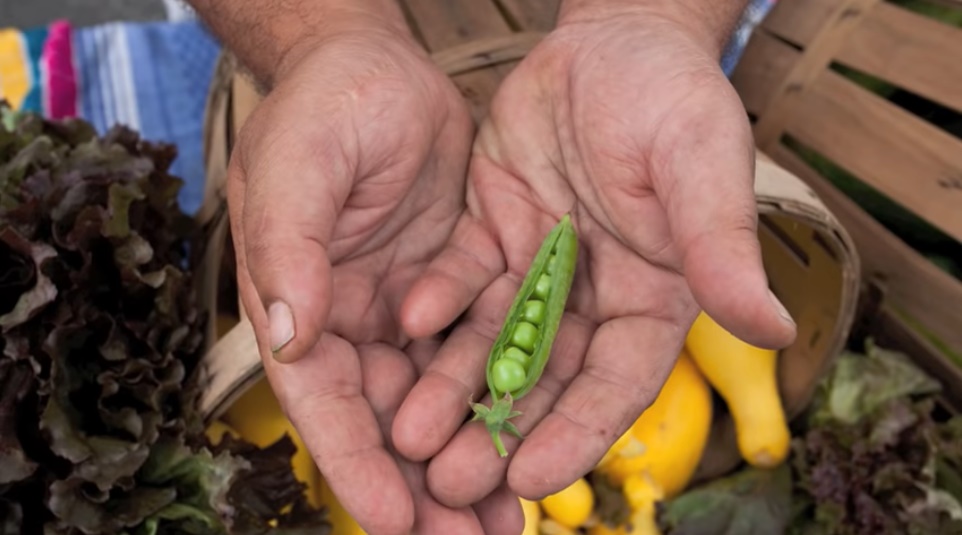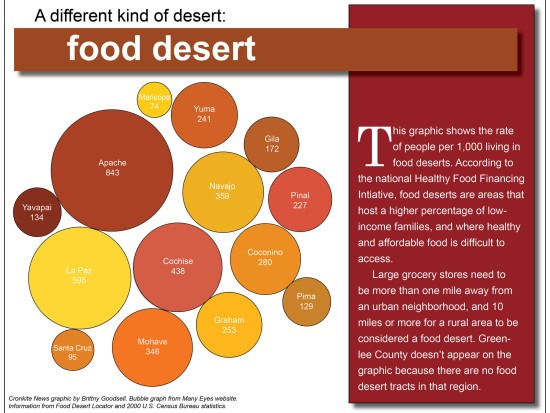by Kayla Sawyer. This article originally appeared on the NICOA blog.
A poor diet now causes more deaths than tobacco smoking and high blood pressure. A healthier diet pattern is associated with 25 percent lower likelihood of developing physical impairment with aging. According to a 27-year global diet analysis published this month in the journal the Lancet, one in five deaths globally — that’s about 11 million people — in 2017 occurred because of too much sodium and a lack of whole grains, fruits, nuts and seeds, rather than too much trans fats, sugar-sweetened drinks and high levels of red and processed meats.
The Navajo Nation is the biggest and most populous reservation in the country, and is largely considered a food desert. There are just 10 grocery stores serving the 150,000 Navajo people living there — one grocery store for every 15,000 people. The U.S. Department of Agriculture (USDA) defines a food desert as “a census tract vapid of fresh fruit, vegetables and other healthful whole foods.” Based on the USDA’s criteria, much of Indian Country lacks easy access to grocery stores or to fresh, affordable food.
Food sovereignty is about the right of a people to determine their own policies relative to food and agriculture as opposed to having their food supply subject to market forces. According to the U.S. Food Sovereignty Alliance, “Food sovereignty goes well beyond ensuring that people have enough food to meet their physical needs. It asserts that people must reclaim their power in the food system by rebuilding the relationships between people and the land, and between food providers and those who eat.”
Food and food production are fundamentally important to Native communities’ health, well-being, economic resilience, cultural heritage and self-preservation. Restoring food sovereignty to Native communities requires the re-introduction of indigenous food production, distribution practices and infrastructure. Food sovereignty initiatives empower tribal members living on the reservations to grow their own healthy, fresh produce, ease low food insecurity and prevent heart disease and type II diabetes.
It’s important that food sovereignty initiatives be community-led. That involves controlling and managing all the factors that contribute to a sustainable food system: environmental assets, economic assets, cultural assets and more. According to the Traditional Plants and Foods Program of Northwest Indian College, communities that exhibit tribal food sustainability and food sovereignty are those that have access to healthy, culturally-appropriate food; grow, gather, hunt and fish in ways that are sustainable long term; distribute foods in ways that allow people to get what they need to stay healthy; adequately compensate those who provide food; and utilize tribal treaty rights and uphold policies that ensure continued access to traditional foods.
Many tribal communities are regaining control of their food supply. They’re growing traditional foods, plants and medicines and collaborating with the federal government to retain rights for hunting and gathering.
Partnership With Native Americans is doing its part to address the challenge of food sovereignty on Native lands by supporting community investment projects on the reservations. The Native American Food Sovereignty Alliance works to put the farmers, wildcrafters, fishers, hunters and ranchers at the center of decision-making on policies, strategies and natural resource management. The Native Food Systems Resource Center undertakes research projects that build knowledge and understanding of Native agriculture and food-systems issues, and inform Native communities about innovative ideas and best practices.
The opinions expressed in this article are those of the author and do not necessarily reflect those of the Diverse Elders Coalition.


